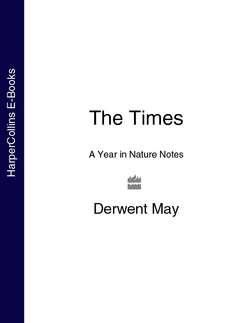Читать книгу The Times A Year in Nature Notes - Derwent May - Страница 7
2nd January
ОглавлениеWHERE THE FARMLAND hedges have not been cut, tall ash saplings are growing out of them and standing up like little flagpoles. They have very smooth bark, and already have the black, claw-shaped leaf buds on them. Blackthorn bushes are putting out long, drooping shoots at the side of the hedges: they end in a sharp spike. Here and there a solitary blue sloe can still be seen. A few green convolvulus leaves are also still trailing over the hedgetops.
On spindle trees, the pink casing of the fruits has dried up to look like brown paper, while the orange berries that were hidden inside are now exposed but are still clinging on. Weeping willows are changing colour and falling at last. The grass or the water beneath is covered with long narrow leaves, yellow on one side, silvery-grey on the other.
Sometimes in the fields one sees a little flock of small, streaky-brown birds that fly up in an odd way, as though they were mounting a flight of stairs. They make a thin, piping call as they go. These are meadow pipits, which are in fact only found on farmland – and on ploughed land, rather than in meadows – in the winter. They nest mainly on moors and marshes.
